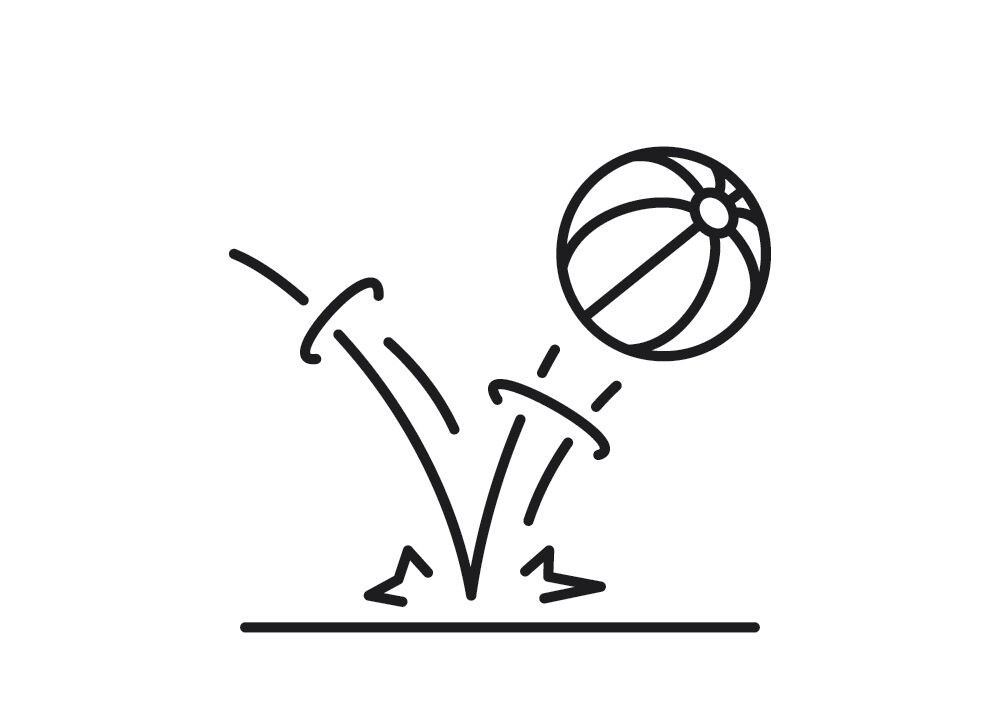
Overview
Title: What is Potential and Kinetic Energy: Spheres in Hot Water
Grade: 6th Grade
Duration: 30 Minutes
Standards
Science – SC.6.P.11.1
Explore the Law of Conservation of Energy by differentiating between potential and kinetic energy. Identify situations where kinetic energy is transformed into potential energy and vice versa.
Objective
The student will be able to observe and describe how kinetic energy turns into potential energy work.
Vocabulary
Potential Energy • Kinetic Energy • Elastic Potential Energy • Joule • Work • Energy • Total Energy • Energy Transformation • Mechanical • Chemical • Nuclear
Materials
- Measuring tape or ruler
- 1 Set of happy/sad spheres/balls
- 1 larger sized ball
- Hard surface (to drop spheres on)
- Safety glasses
- Tongs
- Cup of hot water
- Watch or Clock
Problem Statement
Which ball will have the most transfer of energy?
Procedure
- Use a permanent marker to draw a happy face on ball 1.
- Use a permanent marker to draw a sad face on ball 2.
- Place sphere 1 into the cup of hot water and let it sit in the hot water for two minutes.
- Using the tongs, remove sphere 1 and place sphere 2 into the cup of hot water.
- Drop sphere 1 onto a hard surface from a height of one meter, and record the results.Repeat for a total of three trials.
- Set sphere 1 aside and remove sphere 2 from the hot water using the tongs.
- Put the larger ball into the hot water.
- Drop sphere 2 onto the hard surface from a height of one meter, and record the results. Repeat for a total of three trials.
- Set sphere 2 aside and remove the larger ball from the hot water using the tongs.
- Drop the larger ball onto the hard surface from a height of one meter, and record the results. Repeat for a total of three trials.
What is Happening?
Potential and Kinetic Energy
Spheres
When an object is moving, it has kinetic energy. When an object is still, but is in a position so that gravity can move it, it has gravitational potential energy (GPE). A rock at the top of a hill has potential energy. As it rolls down the hill, the GPE turns into kinetic energy—the energy of motion. A collision occurs when a moving object hits another object. When you push a sphere, your hand gives it kinetic energy. The faster it goes, the more kinetic energy it has. When the sphere runs into your other hand, there is a collision. If it stops completely, it loses all its kinetic energy. The Law of Conservation of Energy says that energy is neither created or destroyed. The energy cannot just disappear. Where does it go? The kinetic energy is converted into other kinds of energy – like sound and heat. Usually, when there is a collision, an object doesn’t stop completely. It rebounds. This means it has not lost all of its kinetic energy.
The sphere will continue bouncing until it no longer has any kinetic energy. When you held the sphere above the table you gave it GPE. If you drop the sphere, you know it will fall because of the force of gravity. This energy of position is its GPE. One of the black spheres you dropped bounced back about 65 centimeters (cm); this is the “happy sphere.” That means it kept about 65 percent of its energy. Where did the rest of the energy go? When the sphere hit the table, could you hear the collision? Part of the energy was changed into sound. Part of the energy was also changed into heat, or thermal energy. The sphere and the table are both getting hotter every time you drop the sphere, even though you cannot really feel the difference. The other sphere you tested also had the same amount of GPE at the beginning, but it hardly bounced; this is the sad sphere. What happened? This “sad sphere” is not broken. It is made of a different kind of rubber than the “happy sphere”. Almost all of the kinetic energy changes into other forms of energy. Most of the sphere’s kinetic energy changes into sound and heat. Feel both of the spheres. Do they feel different? Does the happy sphere seem harder than the sad sphere? The sad sphere is softer, so its shape can change more easily and it can absorb more energy in a collision than a happy sphere.
How does the larger ball compare? When you put the sad sphere into hot water the sphere absorbed thermal energy from the hot water. The sad sphere bounced higher than when it was cool. Since the sphere has absorbed thermal energy from the water, it cannot absorb much more thermal energy from the collision. The sphere retains more of its kinetic energy and bounces higher. As the sphere cools down, it loses its thermal energy and more of the GPE can be changed into heat when it hits the table. The cooler it is before dropping, the less it bounces.
These experiments show us how potential energy is changed into motion and how motion is changed into sound and heat.
Taken from here.
